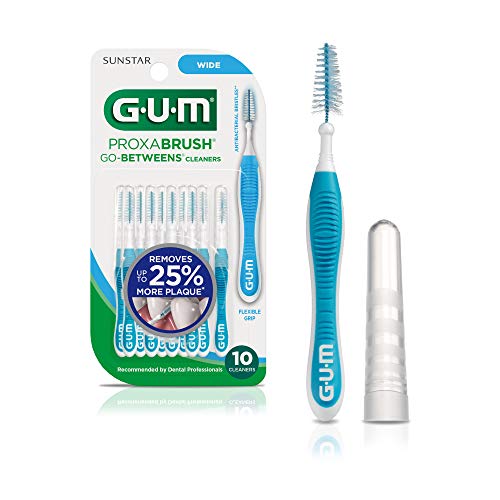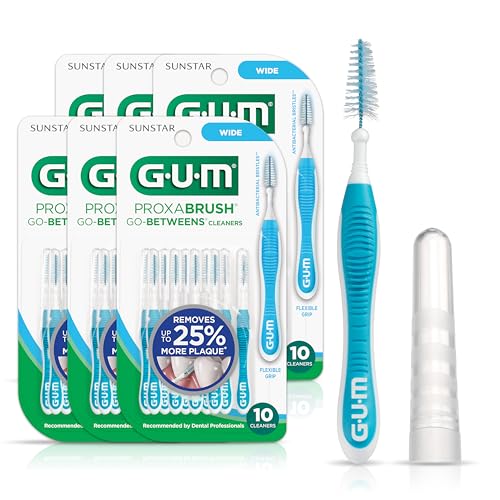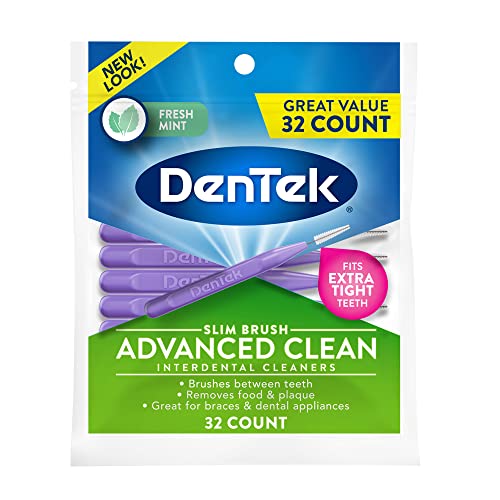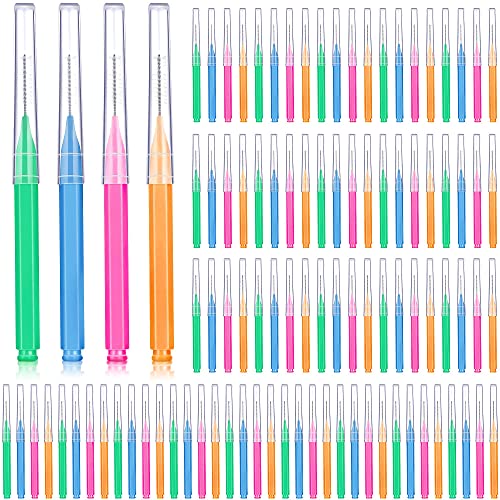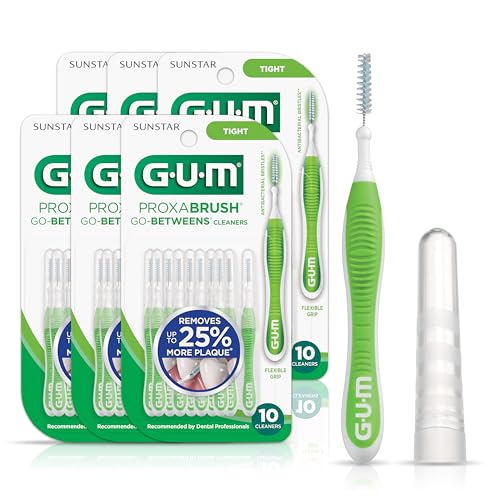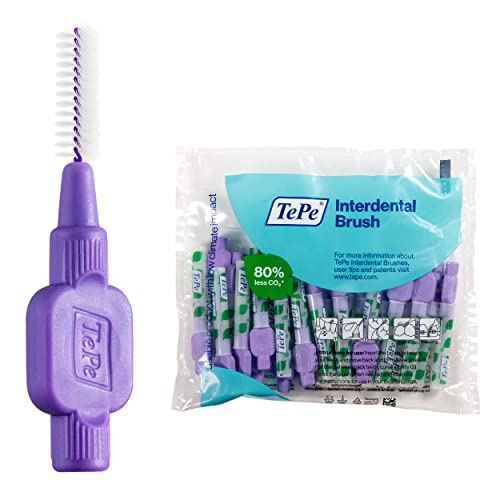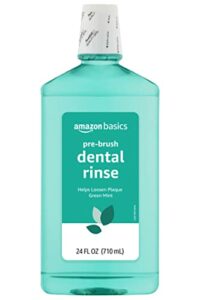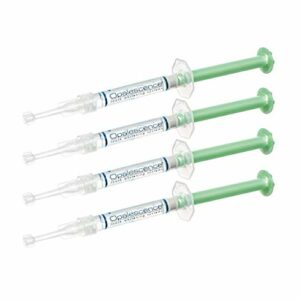Dear readers,
We understand how important oral hygiene is to all of us. Taking care of our teeth and gums not only contributes to a healthy smile, but also plays a significant role in our overall well-being. That’s why we want to share with you the benefits of using interdental brushes. In this blog post, we will delve into the purpose and advantages of incorporating interdental brushes into your oral care routine. By the end, we hope to provide you with valuable insights on how these small yet mighty tools can make a big difference in maintaining optimal oral health. So, let’s explore the world of interdental brushes together!
Achieve a Cleaner Smile with our Bestselling Interdental Brushes
The Importance of Oral Hygiene
Maintaining good oral hygiene is not just about having a sparkling smile; it plays a vital role in our overall health. Proper oral hygiene practices, such as brushing, flossing, and regular dental check-ups, are essential for keeping our teeth and gums healthy. In this blog section, we will delve into the importance of oral hygiene and how it impacts our well-being.
Preventing Dental Problems
Practicing good oral hygiene helps prevent various dental problems, including:
- Tooth Decay: Regular brushing and flossing remove plaque, a sticky film of bacteria that forms on our teeth. Plaque produces acids that attack tooth enamel, leading to cavities. By maintaining good oral hygiene, we can significantly reduce the risk of tooth decay.
- Gum Disease: Plaque buildup can also cause gum disease, which ranges from mild gingivitis to severe periodontitis. Gum disease can lead to gum inflammation, bleeding, and even tooth loss. Proper oral hygiene helps remove plaque, reducing the risk of gum disease.
- Bad Breath: Poor oral hygiene can result in persistent bad breath, known as halitosis. Brushing, flossing, and using mouthwash can help eliminate the bacteria that cause bad breath, keeping our breath fresh.
Overall Health Benefits
Maintaining good oral hygiene not only keeps our teeth and gums healthy but also has broader health benefits. Here are some ways oral hygiene impacts our overall well-being:
- Reduced Risk of Heart Disease: Research suggests a link between gum disease and heart disease. The bacteria from gum infections can enter the bloodstream, leading to inflammation in the blood vessels and increasing the risk of cardiovascular problems. By practicing good oral hygiene, we can help reduce this risk.
- Lower Risk of Respiratory Infections: Poor oral health can contribute to respiratory infections, such as pneumonia and chronic obstructive pulmonary disease (COPD). Bacteria from the mouth can be inhaled into the lungs, causing infections. Maintaining good oral hygiene helps prevent this potential source of respiratory issues.
- Improved Diabetes Management: People with diabetes are more susceptible to gum disease. Conversely, gum disease can make it harder to control blood sugar levels. By maintaining good oral hygiene, individuals with diabetes can help manage their condition more effectively.
Tips for Good Oral Hygiene
To maintain good oral hygiene, here are some essential tips:
- Brushing: Brush your teeth at least twice a day for two minutes each time. Use fluoride toothpaste and a soft-bristled brush. Pay attention to all tooth surfaces, including the tongue.
- Flossing: Floss daily to remove plaque and food particles from between your teeth and along the gumline. This helps prevent cavities and gum disease.
- Mouthwash: Rinse with an antimicrobial mouthwash to further reduce bacteria and freshen your breath.
- Regular Dental Check-ups: Visit your dentist every six months for professional cleanings and check-ups. This allows early detection and treatment of any dental issues.
- Healthy Diet: Maintain a balanced diet, limiting sugary and acidic foods and beverages, as they can contribute to tooth decay.
What are Interdental Brushes?
Maintaining good oral hygiene is essential for a healthy smile. While most of us are familiar with regular toothbrushes, there is another important tool that can greatly contribute to oral health – interdental brushes. In this blog section, we will explore what interdental brushes are, how they differ from regular toothbrushes, and their specific function in oral hygiene.
Interdental Brushes vs. Regular Toothbrushes
Size and Shape
- Interdental brushes are much smaller and more slender compared to regular toothbrushes.
- They are designed to fit into the spaces between your teeth, reaching areas that regular toothbrush bristles cannot access.
Bristle Arrangement
- Regular toothbrushes typically have a flat, broad surface with bristles arranged in a rectangular or diamond pattern.
- Interdental brushes, on the other hand, have a narrow cylindrical shape with bristles arranged in a circular pattern around the wire core.
Bristle Texture
- Regular toothbrush bristles are generally soft or medium in texture.
- Interdental brushes have thinner and softer bristles, allowing for gentle yet effective cleaning between teeth.
Specific Function in Oral Hygiene
Removing Plaque and Food Debris
- Interdental brushes excel at removing plaque and food debris that can get trapped between teeth.
- Unlike regular toothbrushes, interdental brushes can access tight spaces and clean along the gum line.
Preventing Gum Disease and Tooth Decay
- By effectively removing plaque and food particles, interdental brushes play a crucial role in preventing gum disease and tooth decay.
- They can reach areas that regular toothbrushes often miss, reducing the risk of plaque buildup and subsequent oral health issues.
Gum Massage and Stimulation
- Along with cleaning, interdental brushes provide a gentle massage to the gums, improving blood circulation and promoting gum health.
- The stimulation of gum tissue can help prevent gum recession and maintain overall oral hygiene.
Benefits of Using Interdental Brushes
- Interdental brushes are easy to use and can be incorporated into your regular oral hygiene routine.
- They are available in various sizes, allowing individuals to find the perfect fit for their interdental spaces.
- Interdental brushes can be used by people of all ages, including those with braces, dental implants, or crowns.
- Regular use of interdental brushes can help maintain fresh breath and contribute to a confident smile.
In conclusion, interdental brushes are an excellent addition to your oral hygiene routine. By reaching areas that regular toothbrushes cannot, they effectively remove plaque, prevent gum disease, and promote overall oral health. Consider incorporating interdental brushes into your dental care regimen to achieve a cleaner, healthier smile.
Benefits of Using Interdental Brushes
Maintaining good oral hygiene is essential for a healthy mouth and overall well-being. While brushing your teeth twice a day is a crucial step, many people overlook one important aspect of oral care – cleaning the spaces between their teeth. This is where interdental brushes come in. In this blog section, we will explore the various benefits of incorporating interdental brushes into your oral hygiene routine.
Enhanced Plaque Removal
One of the primary benefits of using interdental brushes is improved plaque removal. Plaque is a sticky film that forms on our teeth and harbors harmful bacteria. Regular brushing may not effectively reach the tight spaces between teeth, allowing plaque to accumulate and potentially cause tooth decay and gum disease.
Interdental brushes have small, thin bristles that can easily access these hard-to-reach areas, effectively removing plaque buildup. By incorporating interdental brushes into your routine, you can ensure a more thorough clean and reduce the risk of dental problems.
Prevention of Gum Diseases
Gum diseases, such as gingivitis and periodontitis, are caused by the inflammation of the gums due to the accumulation of plaque and bacteria. If left untreated, these conditions can lead to gum recession, tooth loss, and even impact your overall health.
Regular use of interdental brushes can play a vital role in preventing gum diseases. By removing plaque from the spaces between your teeth, these brushes help reduce the risk of inflammation and gum infections. They also promote healthy gums by stimulating blood circulation and improving gum tissue health.
Improved Breath
Have you ever experienced persistent bad breath, even after brushing your teeth? The culprit could be the food particles and bacteria trapped between your teeth. Regular brushing alone may not eliminate these odor-causing sources, resulting in unpleasant breath.
Interdental brushes prove to be effective in combating bad breath. By cleaning the interdental spaces, they remove the debris and bacteria responsible for foul odors, leaving your breath fresher and more pleasant.
Convenience and Adaptability
Interdental brushes come in various sizes and shapes, making them suitable for everyone, regardless of the size of the gaps between their teeth. Whether you have wider spaces or tight contacts, there is an interdental brush that fits your needs.
Additionally, interdental brushes are easy to use and integrate seamlessly into your oral hygiene routine. They are portable, allowing you to clean your teeth on the go, and can be used alongside your regular toothbrush and floss for comprehensive oral care.
Cost-Effective Alternative
While some may consider interdental brushes an additional expense, they can actually be a cost-effective alternative in the long run. By preventing dental problems and reducing the likelihood of expensive treatments, such as fillings and gum surgeries, interdental brushes help you save money on dental care in the future.
In summary, incorporating interdental brushes into your oral hygiene routine offers numerous benefits, including improved plaque removal, prevention of gum diseases, fresher breath, convenience, adaptability, and long-term cost savings. By prioritizing these small brushes, you can take a proactive approach to your oral health and ensure a confident, healthy smile.
Factors to Consider when Choosing Interdental Brushes
When it comes to oral health, proper dental care goes beyond just brushing your teeth. Maintaining good oral hygiene involves reaching the spaces between your teeth, where traditional toothbrushes may not be able to effectively clean. This is where interdental brushes come in handy. Interdental brushes are small, specialized tools designed to clean those hard-to-reach areas, removing plaque and debris that could otherwise lead to gum disease and cavities.
If you’re considering incorporating interdental brushes into your oral care routine, there are a few important factors to consider. In this article, we will guide you through the features to look out for when selecting the right interdental brushes for your needs.
Brush Size
The size of the interdental brush is an essential factor to consider, as it determines how well the brush can fit into the spaces between your teeth. Here are some key points to keep in mind regarding brush size:
- Ensure the brush is small enough to fit comfortably between your teeth without causing discomfort or pain.
- Consider the varying sizes of the spaces between your teeth. It may be necessary to have different brush sizes to effectively clean different areas.
Bristle Type
The bristles on interdental brushes can come in different materials and shapes. Each type of bristle offers its own unique benefits. Here are the most common bristle types available:
- Nylon Bristles: These are the most commonly used bristles on interdental brushes. They are flexible, gentle on the gums, and can effectively remove plaque.
- Rubber or Silicone Bristles: These bristles are softer and more flexible than nylon bristles. They are ideal for individuals with sensitive gums or those who are prone to bleeding.
- Tapered Bristles: Tapered bristles are designed to reach deep into the spaces between your teeth, ensuring a thorough clean.
Consider your personal needs and preferences when choosing the bristle type for your interdental brush. It’s important to find a balance between effectiveness and comfort.
Handle Design
The handle design of an interdental brush may not seem like a major factor, but it can greatly impact your overall experience and ease of use. Some important considerations include:
- Ergonomics: Look for handles that are comfortable to hold and easy to maneuver. A comfortable grip will make it easier to clean your teeth effectively.
- Flexible Neck: Brushes with flexible necks allow you to reach all areas of your mouth comfortably, even the back teeth.
- Reusable vs. Disposable: Decide whether you prefer a reusable interdental brush (which may come with replaceable brush heads) or a disposable one. Consider your budget and environmental concerns when making this choice.
Understanding the Importance of Interdental Brushes for a Healthier Smile
In conclusion, we have explored the numerous benefits of using interdental brushes for oral hygiene. We have learned that interdental brushes can effectively remove plaque, prevent gum disease, and maintain healthy gums. They are also a great alternative for individuals with braces, bridges, or dental implants.
Considering these factors, we highly recommend incorporating interdental brushes into your oral hygiene routine. By doing so, you can enhance the cleanliness of your teeth and gums, leading to better overall oral health. Remember to choose the appropriate size and consult with your dentist for guidance.
Take care of your smile, and let interdental brushes be your trusted companion in achieving optimal oral hygiene.


